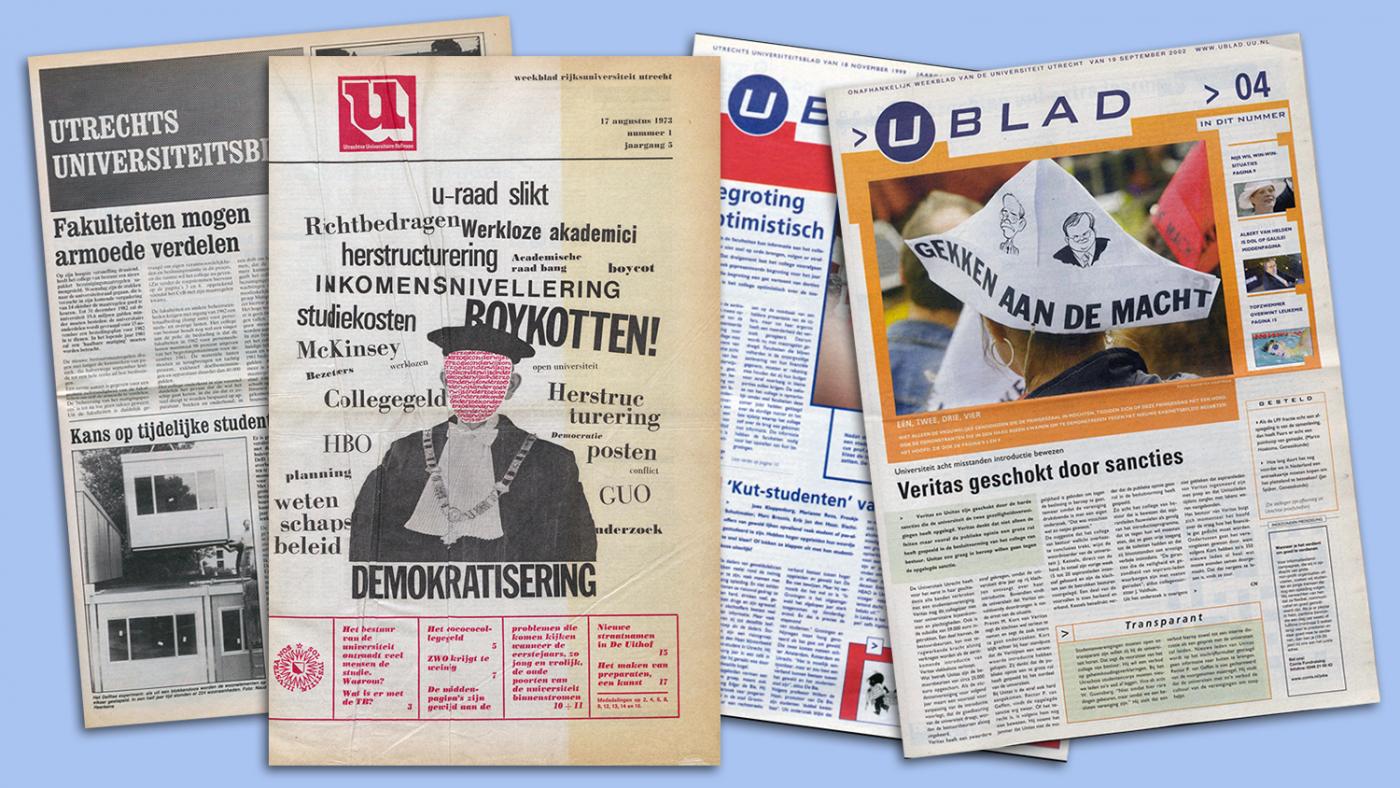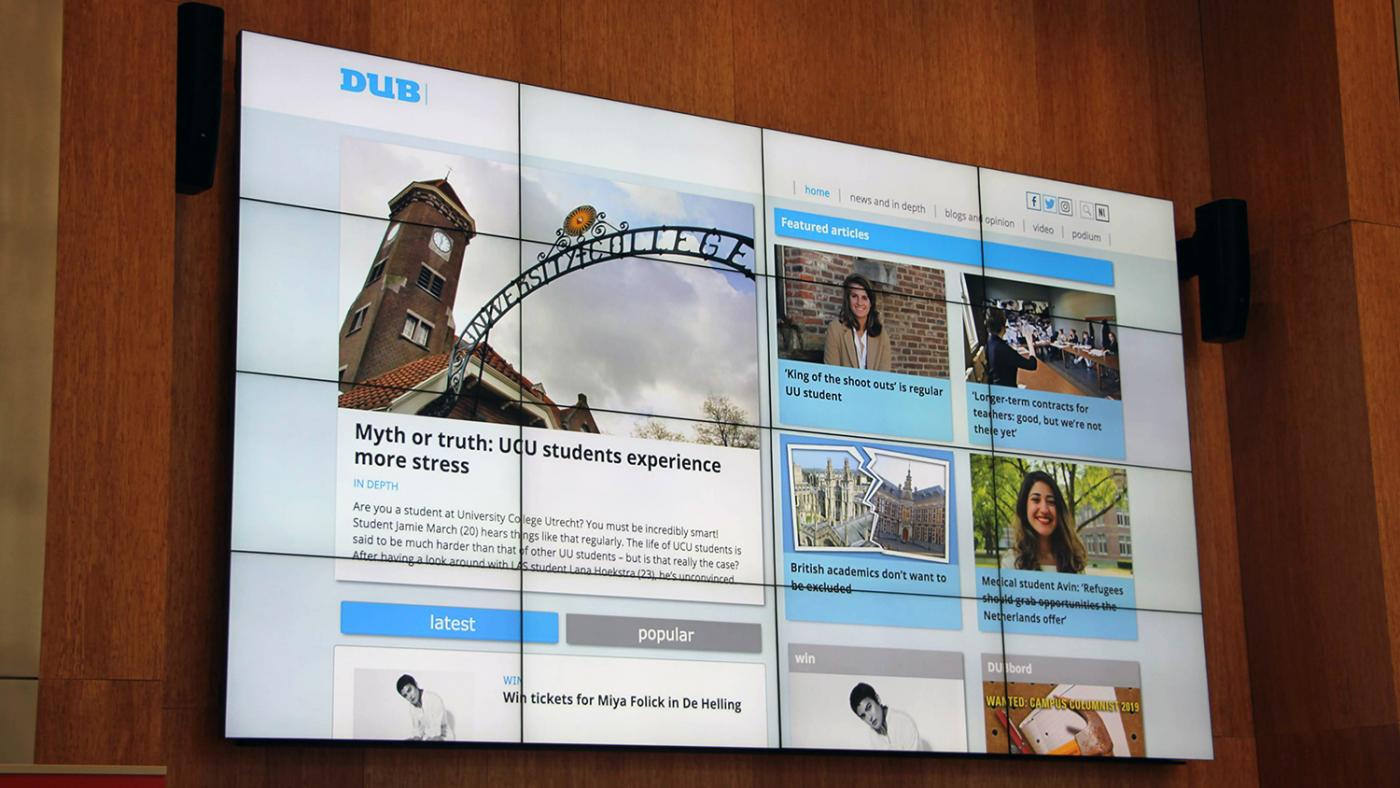‘Universities can impress with a critical magazine’
Critical journalism in higher education dates back to the sixties

On Friday, Ries Agterberg, editor-in-chief of Utrecht University’s news website DUB, will be one of the speakers at a conference about the history of university magazines. In addition to his role at DUB, he serves as the chair of the association of editors-in-chief of higher education media. When he saw the conference title, From a Thorn in the Flesh to Corporate Glossy? he immediately raised two concerns. “It suggests that a glossy cannot write critical articles,” he explains. “Besides, these publications have long since passed their glossy days.”
The conference, held by the Belgian-Dutch Society for the History and Science of Universities, will take place in Groningen, with contributions from the university magazines of Groningen, Leiden, Delft, Leuven, and Rotterdam. Agterberg will speak about the ever-changing role of university magazines in general.
Roots in the sixties
According to Agterberg, most university magazines date back to the sixties, when students rebelled and fought for the democratisation of universities. Since 1970, Dutch universities were being governed according to a "city council model" in which student and staff councils had co-decision rights.
“That was essential for university magazines”, Agterberg explains. “A system like that must have independent reporting as well. Who agrees with whom and what conflicts are there? The magazines would often focus on the political games rather than how the subject in question would actually affect students and employees.”
The emphasis on university politics was an obvious one because the board depended on the councils, who had a say in everything. This changed under the reign of the former Minister of Education Jo Ritzen, who implemented the so-called MUB (a Dutch acronym that stands for "modernisation of university board organisation") in the late 1990s.
There were plenty of reasons to do so. “The minister couldn’t actually hold the directors accountable for anything because they didn’t have that much power. In Leiden, the non-university members of the council – yes, they existed – once decided that the board had to go due to fraudulent exchanges concerning a new building for the Faculty of Medicine. I think this conflict has been one of the reasons to implement MUB,” Agterberg says.

Reputation
Things kept getting less transparent. The Executive Board took the most important decisions in a meeting with the deans but nobody else was invited. In addition, board members started to attach more value to the reputation of their institution, which put critical magazines even more under pressure. The editors were forced to find a new role for themselves.
Sometimes there were clashes. In Tilburg, where Agterberg worked as well, the editors wrote an article about the poor score the university had gotten on Keuzegids, an independent consumer guide. The magazine was then taken off the shelves, so the visitors to the university's open day couldn't read it. “These were the times of slogans, profiling and competing with other institutions,” Agterberg explains.
This forced university magazines to make themselves indispensable to the university community. They started to publish more articles about topics that directly affected students and employees (such as the implementation of the Bachelor's and Master's system) instead of all the quarrels in the councils. This was also the time that some magazines started to look like glossies, with shiny covers and more lifestyle articles.

Independent
Even so, most magazines remained critical and independent. There were occasional conflicts with board members but they didn’t affect the position of magazines. After all, having a critical magazine looks impressive and trying to undermine it attracts heavy criticism. Agterberg: “It also helps you to build an image when you say 'discussions are free and open at our university.'"
Universities of Applied Sciences didn’t have that strong a tradition, Agterberg adds. “Most of the magazines at universities of applied sciences were launched later and thus miss the experience from the 60s and the 70s that university magazines benefited from. That’s why there are only a few independent editors in that sector.”
Meanwhile, magazines have entered a new, digital phase. They’re all publishing their content online and most have said goodbye to their paper editions. DUB was the first one to do so, in 2010 — or the first to be forced to do so. Digitalisation is closely linked to financing as well.
There are pros and cons to digitalisation, says Agterberg. On the one hand, paper editions would reach more people because they were distributed everywhere. Now, readers have to take the time to visit a website. On the other hand, online articles can now draw an unprecedented number of readers, also from outside the institution. “Our most-read article, month after month, is one about student slang from years ago."
Higher education media have such a strong tradition they are not likely to vanish anytime soon. According to Agterberg, the communication departments have understood why they are so useful. “Public relations professionals ask themselves 'what do we want to tell?' whereas journalists ask themselves 'what would students and staff be interested in?' That’s not always the same thing.”

Research journalism
Agterberg says investigative journalism is becoming a trend in higher education media. Some magazines are trying to get to the bottom of delicate matters. In Delft, for example, a collaboration between the university and researchers linked to the Chinese army has come under fire.
In addition, university magazines these days tend to write about hot topics like inclusion and social justice. “It’s good to keep a close eye on trends,” according to Agterberg. “As independent journalists, we have to give a voice to the people who feel strongly about these topics but also be mindful of those who are critical of them."
In this day and age, magazines have to ask themselves difficult questions as well, he adds. “In what way do we present the news? How do we deal with disinformation? When should we listen to criticism and when should we do things our way? That's how we keep evolving.”
HOP, Bas Belleman